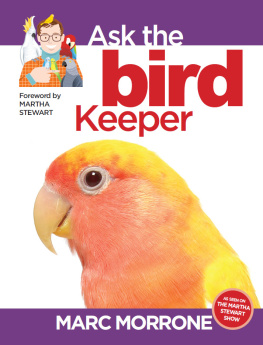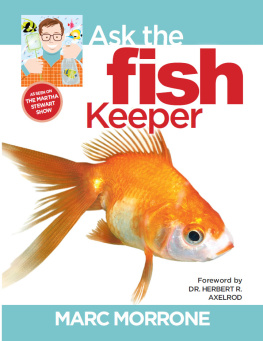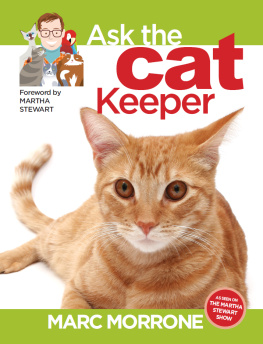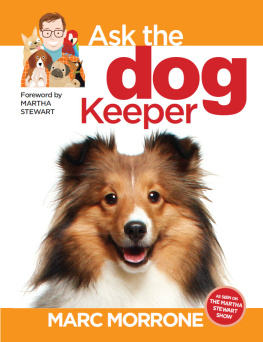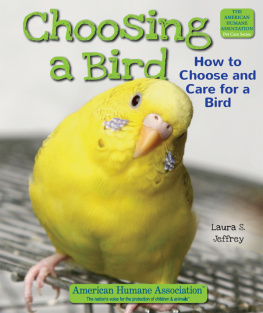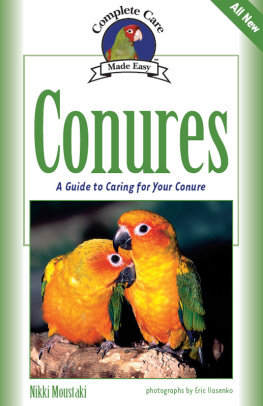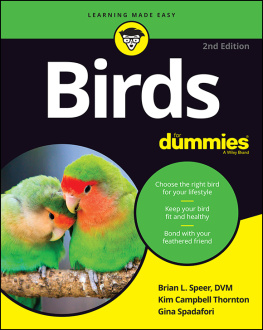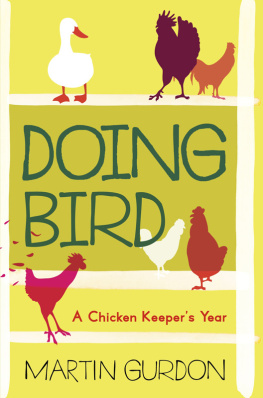
To Harry,
the bird I didnt give up at gunpoint
Original illustrations 2009 by Jason OMalley. Photographs 2009 by Cioli/Hunnicutt I-5 Studio, Isabelle Franais, Daniel Maldonado (www.canarysave.com),
Argiris Savopoulos (greekfancypigeons.com), Dennis Soares, Dan Voydanoff
(www.voydanoff.net), and Shutterstock.com.
Special thanks to the authors two veterinarians, Dr. Jonathan May and Dr. Brian Marder,
and to the staff of Bird Talk for reviewing the text and photographs of this book.
Copyright 2009 by I-5 Press
All rights reserved. No part of this book may be reproduced, stored in a retrieval system, or transmitted in any form or by any means, electronic, mechanical, photocopying, recording, or otherwise, without the prior written permission of I-5 Press, except for the inclusion of brief quotations in an acknowledged review.
Library of Congress Cataloging-in-Publication Data
Morrone, Marc, 1960
[Ask the bird keeper]
Marc Morrones ask the bird keeper / by Marc Morrone with Amy Fernandez.
p. cm.
ISBN 978-1-933958-31-6
eISBN 978-1-937049-94-2
1. Cage birdsMiscellanea. 2. Cage birdsHealthMiscellanea. 3. Cage birdsBehaviorMiscellanea. I. Fernandez, Amy. II. Title. III. Title: Ask the bird keeper.
SF461.M69 2009
636.6dc22
2009009828
I-5 Press
A Division of I-5 Publishing, LLC
3 Burroughs
Irvine, California 92618
Printed and bound in China
16 15 14 13 12 11 10 3 4 5 6 7 8 9 10
CONTENTS
FOREWORD
BY MARTHA STEWART
I got my first birds while a student at Barnard College. My husband and I were living in a three-room apartment on West 114th Street that had no view except one of cluttered rooftops and smoke-emitting incinerator chimneys.
We bought two bluish parakeets who sang for us all day, lived in a spacious cage, and taught me so much about the complex and wonderful life of birds. Aetheltwig and Aethelred were friendly, intelligent, and always looking for a way to escape confinement. They were free whenever we were homethey flew around the small apartment, sat on my pen as I wrote my college papers, perched on the moving carriage of my electric typewriter, and ate my cornflakes or raisin bran while sitting on the edge of my breakfast bowl.
They seemed to be busy all day longeating, bathing, singing, squawking, or playing with things. They were so much fun. One day, they did get the opportunity to be free. A small, expandable screen fell out of one of the slightly open windows, leaving just enough space for them to wiggle their way, unobserved, to the great outdoors. They did not return, and I was heartbroken.
My next bird was given to me by my husband as a replacement for his company (we were divorcing). Jos Arcadio Buenda (named after a character from One Hundred Years of Solitude by Gabriel Garca Mrquez) was a conure, and if my husband had researched the species, he would have known that conures are long lived, the noisiest of birds, extremely demanding of attention, and destructiveand this one was a jewelry thief as well. I had five years with Jos before a friend fell in love with him and offered to adopt him.
I always wanted a cockatoo or big parrot after Jos, but I realized the gigantic responsibility such a bird represented, and I have settled for an ever-expanding group of red canaries who enliven my home daily with beautiful song, constant rustling noises, and colorful activity.
And who is my bird mentor, my coach, my teacher, and my guide? Marc Morrone, of course. He is so knowledgeable and so practical in his approach to the care of all birds. I can always count on Marcs years of experience to help me solve my problems and deal with my challenges in handling my flock on a daily basis. As a result of his intelligent and sensible advice, I could not be happier or more at ease raising and keeping my healthy and growing collection.
Thanks, Marc!
Martha Stewart, April 2009


INTRODUCTION
One of my favorite books is George Orwells Animal Farm. In this story, a bunch of farm animals get together, kick the humans off the farm, and decide to run it themselves. At first, the animals posted a bill of rights on the wall of the barn, proclaiming that all animals were equal, all humans were bad, and so forth. As time went on, some of the animals cleverly manipulated the others into doing all of the work and began treating them as commodities, just like the human farmers did. At the end, the pigs start wearing clothes, walking upright, and buying and selling the other animals. To the other animals astonishment, they find a new slogan on the barn wall, saying that all animals are equal but some are more equal than others. This is pretty much the way many humans view birds; with the exception of a few endangered species such as whooping cranes, all birds are legally defined as commodities. We can use them as we wish as long as its done in a humane manner.
These uses vary considerably, from outright cruelty toward chickens and turkeys to extreme adulation for parrots and canaries. Cruelty is justified by claiming that particular birds are not intelligent or worthy of compassion and humane care. In reality, its defenders are trying to rationalize inhumane treatment. But realistically, whats the difference between a pigeon, a chicken, a parakeet, and a canary? Why do we justify eating some birds, and would never consider keeping them as pets, while other birds are coddled and spoiled as clever companions?

I find all birds equally fascinating and feel that they all deserve the same level of care. If chickens, pheasants, turkeys, ducks, geese, and quail are important food sources, then thats the way of the world. But the fact that we eat them doesnt mean they dont deserve a happy life and a humane death. Laws should ensure humane care of birds used for food. If we must pay an extra dollar a pound for chicken cutlets in order to give these birds a decent quality of life, then that is the price we should pay to consume another sentient being. And birds are no less sentient than dogs or cats. In some ways, they are even more intelligent. They all can make great pets, and I have developed great relationships with birds ranging from ostriches to hummingbirds.
This book is one of few that present all species of birds as potential pets and animals equally receptive to a relationship with humans. Some may think that parrots are the best pet birds, but they arent ideal for everyone. You can interact well with a finch, canary, pigeon, or duck. Parrots have simply had better publicity because of their ability to mimic human words. (Im sure that the first parrot that ever did that would have regretted it if hed known how that little trick would be exploited in centuries to comebesides, parrots have far more to offer than conversation.)
All birds are fascinating. A birds beak, feathers, upright stance, eyes, and songits simply amazing that a creature so physically different from us exists on this planet, and in studying bird anatomy, it is easy to see evidence of the birds prehistoric ancestors. When bird owners complain to me that their bird doesnt want to be touched, or it makes too much noise, or it chews on furniture, I have to roll my eyes. I really want to ask them why they cannot appreciate this magnificent creature sharing their living space, but what I settle for is simply answering their questions, which is what I am going to do in this book.
Next page
